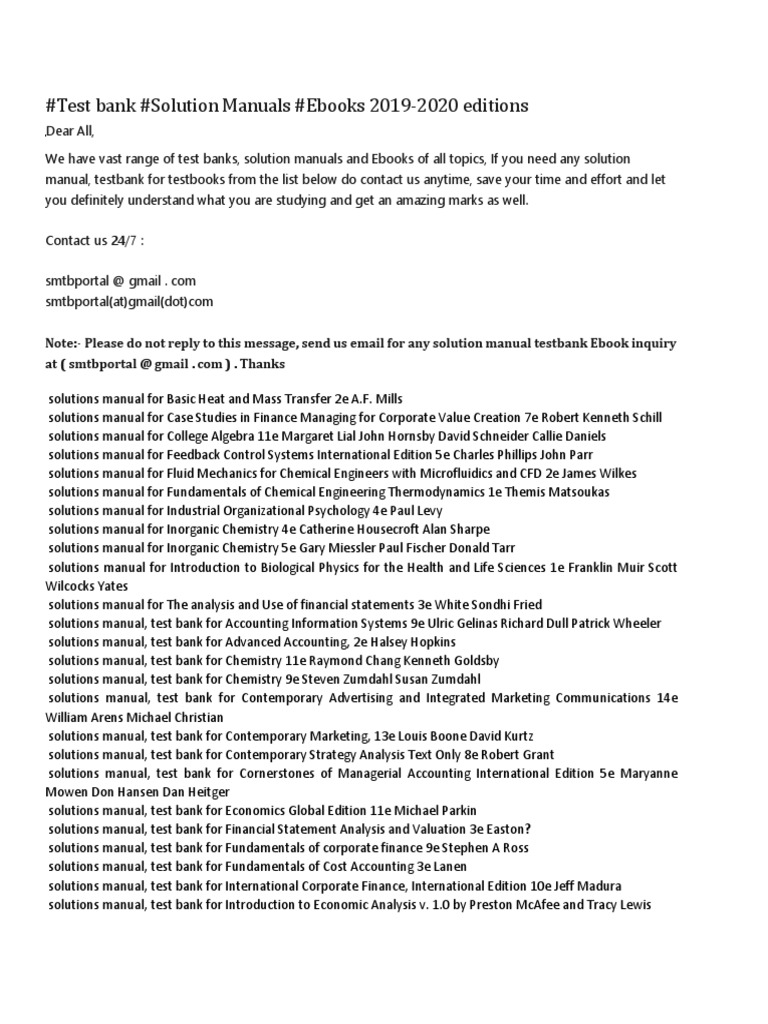In this chapter we will consider the motion of solid objects under the application of forces and torques.We call these solid objects ``Rigid Bodies'.Of course nothing is completely rigid.Objects deform elastically, but these deformation are negligible for a wide range of problems.

Human Body Dynamics Solution Manual Solution

For a rigid body, we will find in the equations that the motion can be separated into the motion of the center of massand the rotation around the center of mass.

In the rigid body limit, the state of a body can be described by six variables.These are the position of the center of mass andthree angles to describe the orientation of the object.
We will apply some of the results we have derived for transformation from an inertial frame to a rotating frame.For now we choose the body to be at rest inside the rotating (body) frameand the origin to be at the center of mass.

Download at: People also search: dynamics of structures (5th edition) pdf dynamics of structures chopra 5th edition pdf dynamics of s Slideshare uses cookies to improve functionality and performance, and to provide you with relevant advertising. Objective 2: To educate students to identify, formulate and solve engineering problems in rigid body dynamics. 2.1 Students will demonstrate the ability to isolate rigid bodies and to draw clear and appropriate free body diagrams. 2.2 Students will demonstrate an ability to identify kinematic and kinetic knowns and unknowns.
For the purposes of calculation, we will assume that the body is made up of a set of discrete masses,labeled by an index .In any inertial frame, the velocity of one of those masses is
 In this equation, the is given in the inertial frame, is the velocity of the center of mass of the object,and is the position of the mass in the body frame in which it is at rest.
In this equation, the is given in the inertial frame, is the velocity of the center of mass of the object,and is the position of the mass in the body frame in which it is at rest.In introductory physics courses, we have learned about the moment of inertia and found that rotational motion is analogous to simple kinetics,with the analog of momentum being angular momentum andthe analog of the kinetic energy equation being .Thinking about the rotational physics of a dumbbell, we can see that rotational motion is not always so simple.Think about rotation of a dumb-ell about an axis at an angle to the axis.We find that the angular momentum is always perpendicular to the axis and thus is not parallel to .
Charles Stark Draper is shown below with a gyroscope used for the inertial guidance systems.
These were gyroscopes capable of measuring orientation on three angles plus accelerometers.The motion of a rocker could be measured and integrated to guide it to its target.By the time of the Minuteman missile, accuracies of 100m could be achieved on a 10000 km flight.Better accuracy can now be achieved with GPS.Dynamics Solution Manual Hibbeler
- The Inertia Tensor
- Principal Axes
- Euler's Equations